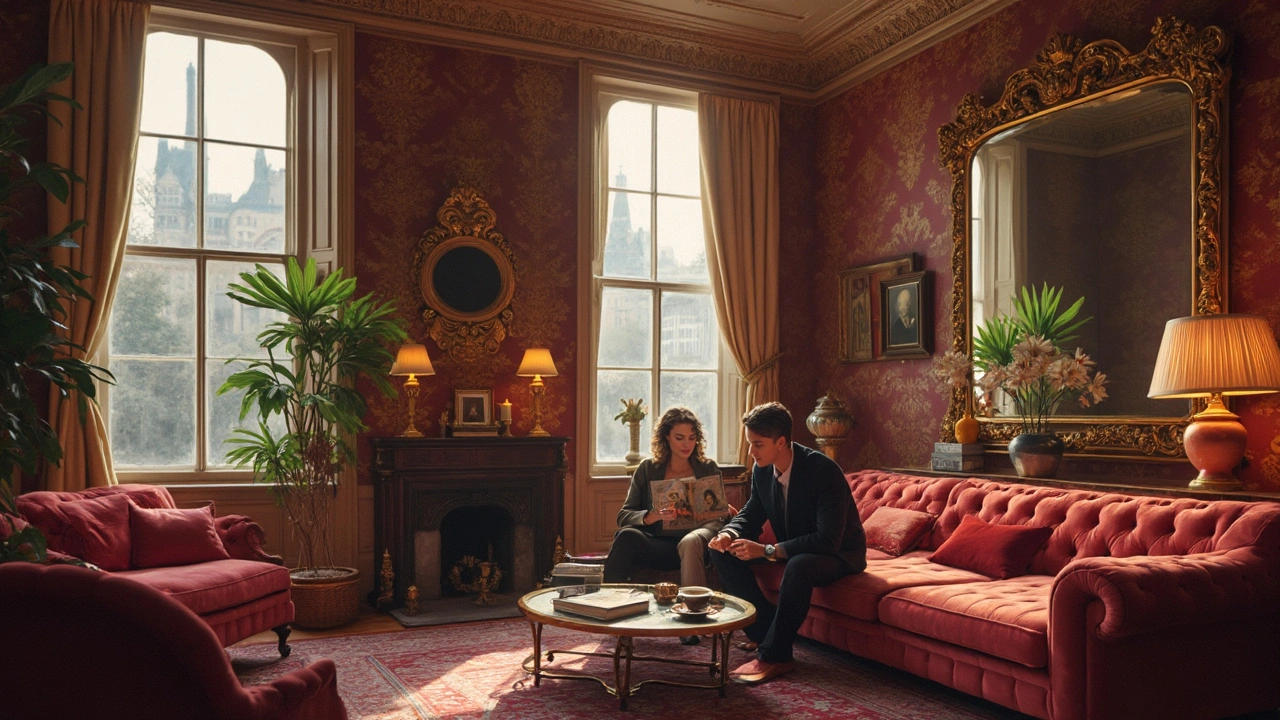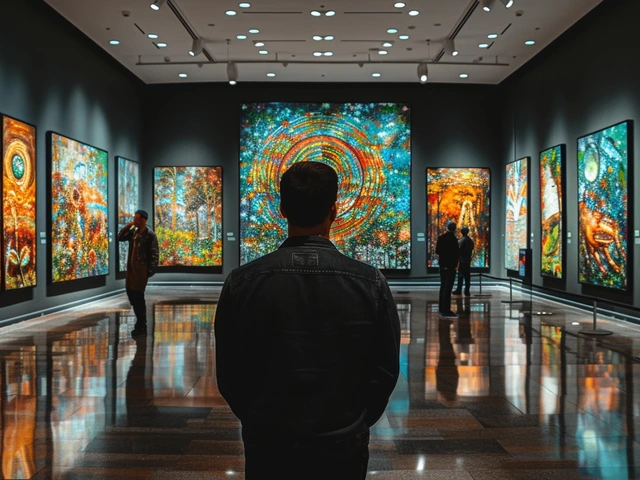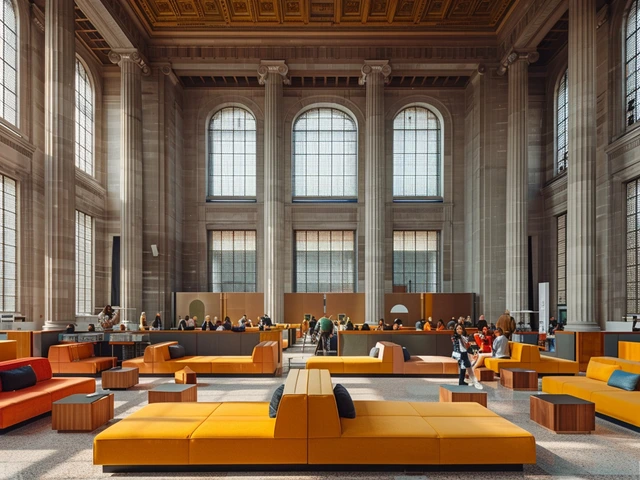You’d be surprised how much the Baroque Era slips into things we see and hear every day. Baroque isn’t just about old, fancy paintings in stuffy museums. It’s everywhere, from movie scores that give you chills to the bold wallpaper patterns at trendy cafes downtown. The drama and flair that made Baroque art and music so unique are still setting the vibe for things we love.
Think about those movie trailers that throw in sweeping, dramatic music to get your heart racing—that’s pure Baroque influence. The next time you spot a statement chandelier in someone’s hallway or scroll past a grand portrait on Instagram, you’re seeing echoes of an era that loved grabbing your attention. Turns out, old doesn’t mean outdated. Baroque’s love for boldness taught today’s designers, musicians, even advertisers a few tricks about standing out in a busy world.
- What Sparked the Baroque Era?
- Baroque in Art: Beyond Gold Frames
- Music That Changed the Game
- Baroque and Everyday Design
- Baroque’s Unexpected Places in Pop Culture
- Easy Ways to Add a Baroque Touch
What Sparked the Baroque Era?
The Baroque Era didn’t just pop up out of nowhere. It all kicked off in late 1500s Italy, at a time when the Catholic Church was worried about losing people to new Protestant groups. The Church wanted art and music that would grab emotions and draw people back in—something dramatic, not shy. That push caused artists and musicians to go all out, making their work more emotional and intense than ever before.
But there was more at play. European leaders, especially royalty, loved using art and architecture as a flex—showing off their money and power. The fancy palaces and over-the-top churches they built during the Baroque Era were basically the original status symbols. You’ll still find tourists staring up at St. Peter’s Basilica in Rome or the Palace of Versailles in France, both built to impress and even intimidate.
| Baroque Kicked Off | Where | Fuelled By |
|---|---|---|
| Late 1500s | Italy (spread across Europe) | Catholic Church, Royalty, Scientists |
Surprisingly, science was also part of the mix. Famous names like Galileo and Kepler were changing how people saw the world—literally. New discoveries about space, light, and perspective influenced painters and builders. Artists started adding realistic details and wild effects to impress anyone checking out their work. Creativity was kind of in a race with reality at that point.
- Churches requested epic stories on ceilings (think Michelangelo and Caravaggio).
- Kings used art to show who was boss (like with the crazy Hall of Mirrors at Versailles).
- Musicians boosted emotions with new sounds and styles, bringing a whole new kind of drama to concerts and church services.
So, the Baroque Era came out of a wild mix—religion, politics, science, and the urge to stand out. Turns out, feeling something big was the whole point from the very beginning.
Baroque in Art: Beyond Gold Frames
Baroque art is way more than just golden picture frames and fancy ceilings. Back in the 1600s and 1700s, artists like Caravaggio and Rembrandt pushed things to a new level. They used shadow and light (that cool “chiaroscuro” effect) to make people and scenes pop off the canvas. This style didn’t just stick with dusty churches—it spilled into regular homes and public spaces, too.
One thing that really set Baroque art apart was how it made viewers feel like they were in the middle of the action. Instead of just standing around looking pretty, subjects in Baroque paintings look like they’re moving, talking, or even looking right at you. This whole approach taught today’s photographers and filmmakers a big lesson about storytelling with images—and it’s why you’ll see so much dramatic lighting in movie posters and ads.
Compare typical Baroque features to what’s popular in modern design. Check this quick breakdown:
| Feature | Baroque Art | Modern Use Today |
|---|---|---|
| Lighting | Strong contrast, deep shadows | Photography, fashion shoots |
| Color | Rich reds, golds, intense blues | Home décor accents, branding |
| Emotion | Dramatic scenes, expressive faces | Movie scenes, Instagram portraits |
| Texture | Heavy fabrics, sculpted details | Fashion trends, interior textiles |
Weird fact—Baroque artists didn’t shy away from everyday life or even “ugly” stuff. Rembrandt painted people just as they were, wrinkles and all. That’s a direct line to today’s trend of unfiltered selfies and keeping things real on social media.
If you want to bring a bit of that Baroque energy into your world, try playing with lighting at home: place a lamp at an angle to make bold shadows or hang up a dramatic art print with strong color contrast. Even thrift stores are full of bold, old-school frames that look expensive but aren’t. Sometimes stealing a tip from the past gives your space more personality than buying something new.
Music That Changed the Game
If you think Baroque music is just background noise for royal banquets, think again. This was the era that gave us some of the biggest names—Johann Sebastian Bach, Antonio Vivaldi, and George Frideric Handel. These guys basically invented moves that today’s top artists still borrow.
The Baroque era (roughly 1600-1750) was when new instruments became stars. The violin took center stage and the harpsichord was everywhere. Concertos and operas, things we take for granted now, took off during these years. Vivaldi’s “The Four Seasons” wasn’t just a catchy tune—it showed off the technical skills musicians needed and painted pictures with sound way before movie soundtracks were a thing.
Composers started writing music that told stories. Instead of stiff, background pieces, Baroque music danced, sobbed, battled, and celebrated. This made music feel more alive and relatable. Today’s film composers copy this style to guide your emotions while you binge your favorite show or watch a blockbuster movie.
- Handel’s “Messiah” is still performed thousands of times a year—especially around the holidays.
- Bach’s style pops up in pop, jazz, and even hip-hop—Kanye West sampled a Bach fugue in “Gone.”
- Modern electronic musicians use the same repetition and loops you’ll find in Baroque dance suites.
Here’s a quick look at how Baroque music stands out compared to other eras:
| Feature | Baroque Era | Classical Era |
|---|---|---|
| Major Instrument | Violin, Harpsichord | Piano |
| Style | Bold, Dramatic, Ornate | Simpler, More Balanced |
| Famous Composer | Bach, Vivaldi, Handel | Mozart, Haydn |
| Famous Works | "The Four Seasons", "Messiah" | "Eine kleine Nachtmusik", "The Creation" |
One quick tip: want to boost your productivity? Try listening to some Baroque playlists—studies show that music in the 60-80 beats per minute range, common for lots of Baroque pieces, actually helps focus and memory.

Baroque and Everyday Design
Baroque is alive and well in modern design, popping up in ways that you probably didn’t even notice before. You don’t need to visit a European palace to see its impact. Look around any boutique hotel, Instagram-friendly cafe, or even that fancy home goods store you keep meaning to check out—Baroque is there.
One obvious giveaway is the use of bold, oversized patterns on wallpaper, pillows, and rugs. The Baroque look is all about drama and movement, so it’s not afraid of swirly lines, fancy curves, and gold accents. A lot of interior designers mix these with more modern pieces to create a cool, balanced vibe. Ever seen a super ornate mirror hanging above a plain white sink? That’s straight from the Baroque playbook.
Furniture also nods to Baroque with those famous cabriole legs (the ones that curve and flare out), deep button tufting, and velvet fabrics. IKEA actually launched a line inspired by 17th-century Baroque shapes—no royal budget required. Even mass-market wall decals and lamp shades often borrow these swoopy, decorated shapes, tweaking them just enough for today’s tastes.
If you want to give your home a Baroque boost without making it feel like a museum, try these quick tips:
- Pick a single item with heavy ornamentation, like a gold-framed mirror or chandelier. Let it stand out against plain backgrounds.
- Go for bold, swirling patterns in small doses—throw pillows, area rugs, or curtains.
- Mix and match: Pair ornate frames with simple, modern furniture so the space doesn’t look cluttered or old-fashioned.
- Try adding a velvet chair or tufted cushion for a soft Baroque touch that’s actually comfortable.
It all comes down to balance. The Baroque influence in today’s design world is less about copying old styles and more about using pops of flair to make everyday spaces a little more dramatic and fun. It’s proof that centuries-old design ideas can still fit right in—no powdered wigs required.
Baroque’s Unexpected Places in Pop Culture
Baroque might feel old-school, but its influence pops up in places you’d least expect—especially in today’s pop culture. Scroll through Netflix and you’ll spot Baroque-style costumes and sets in hit shows like “Bridgerton.” That elaborate look isn’t random—it’s a direct nod to Baroque’s love for drama and detail, which grabs viewers’ attention and sets a rich, immersive vibe.
Flip on any big budget superhero movie and listen closely. The epic, powerful music you hear borrows from classic Baroque composers like Handel and Vivaldi. Movie soundtracks love those grand, emotional swells because Baroque music was designed to move people. Hans Zimmer, one of Hollywood’s go-to composers, often blends Baroque elements into his scores to heighten suspense or emotion.
You’ll even find Baroque showing up at music festivals and on TikTok. Just look at the viral videos where DJs remix Vivaldi’s “Four Seasons” into dance tracks or mash up baroque beats with pop hits. Billie Eilish has filmed music videos in settings packed with chandeliers and gilded mirrors—straight out of a 17th-century playbook. The style’s soft golds, bold contrasts, and “extra” attitude look surprisingly fresh, even next to neon lights and streetwear.
Fashion regularly recycles Baroque’s theatrical flair too. Runway shows for brands like Dolce & Gabbana or Versace go heavy on ornate embroidery, high collars, and swirling prints—all ripped from Baroque paintings. The trend usually picks up before awards season as celebs want to be noticed on red carpets.
| Pop Culture Example | Baroque Element | Year/Release |
|---|---|---|
| "Bridgerton" (Netflix) | Costuming, Interiors | 2020-present |
| Hans Zimmer Movie Scores | Orchestral, Dramatic Swells | 2000s–now |
| Vivaldi Remixes on TikTok | Baroque Music, Dance Mashups | 2022–2025 |
| Dolce & Gabbana Runway | Baroque Prints & Embroidery | 2017, 2023 |
| Billie Eilish’s "Bury a Friend" Video | Gilded Mirrors & Chandeliers | 2019 |
If you want to spot more Baroque in the wild, head to art exhibitions, major ad campaigns around the holidays (think dramatic perfume ads), or even some music videos. The Baroque era style is the go-to for anyone trying to grab your attention or make an impact—with gold, drama, and a bit of attitude.
Easy Ways to Add a Baroque Touch
You don’t need a palace or a crazy budget to bring some Baroque flavor into your life. This style is all about drama and details, but you can totally use it in small, budget-friendly ways. If you love a little extra flair, here’s how to use Baroque tricks in your space or style right now.
- Baroque patterns: Look for damask wallpapers or pillow covers with swirling, bold designs. Even one accent wall can change up a room’s vibe, giving it that classic European feel.
- Statement mirrors: Baroque mirrors usually have thick, ornate gold frames. Grab a vintage or thrifted one, or find a modern knockoff. Hang it above a dresser or entryway table—boom, instant drama!
- Candles and candelabras: If you want to channel those over-the-top dinner parties from the 1600s, try real or fake candles in chunky holders. It’s a mood-setter, even for Tuesday takeout.
- Gallery walls: Create a mini gallery at home with dramatic portraits or high-contrast landscapes. Use thrift store frames or mix in black and gold ones for that Baroque vibe. Remember, symmetry is key.
- Music playlists: Baroque music isn’t just for the background at museums. Throw on some Vivaldi or Bach while you work or chill at home. It can help you focus and even boost creativity according to a recent study in the Journal of Cognitive Neuroscience.
- Fashion details: Add a Baroque twist to your outfits with embroidery, lace, or bold costume jewelry. Think chunky gold, pearl accents, or velvet—easy to pick up secondhand or on a budget.
You can even mix just one or two of these ideas into your routine. Baroque is about having fun with details and not being afraid to stand out, whether you’re decorating, dressing up, or just building your next playlist.



